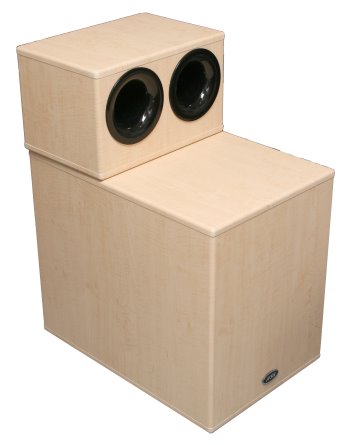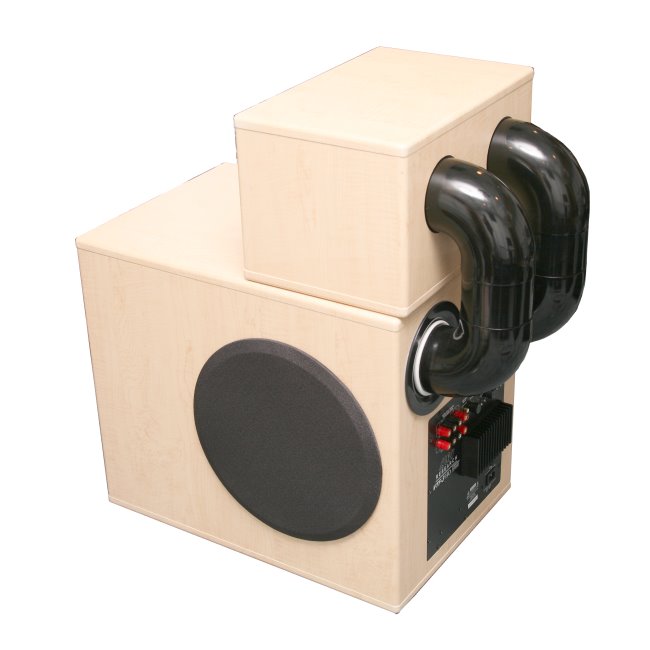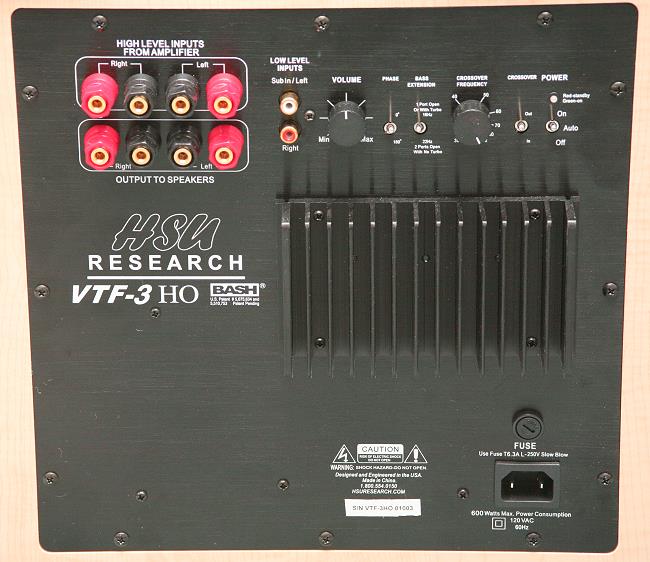|
|||||||||
|
A month ago, Dr. Poh Hsu, President of Hsu Research, which is located in Southern California, drove up to San Francisco to see his daughter. He came by Secrets' offices in Redwood City (about 25 miles south of San Francisco) during the trip, and sat for a video interview which will be published shortly. He also dropped off his latest product, the VTF-3 HO subwoofer, with Turbo Charger. The VTF-3 has been around for awhile, but the HO (High Output) version adds a more powerful amplifier, along with a few more things on the amplifier control panel. It also now has the Turbo Charger, which is a module that sits on top of the VTF-3, and connects to its ports, doubling the port length. The Turbo Charger is an optional item that can be added anytime, for about $100. There are some other module items coming down the road as well. Since the combination makes this product the world's first modular subwoofer, I was very anxious to try it out, and indeed, was setting it up as Dr. Hsu was backing out of the driveway. The Design The driver in the VTF-3 HO is a new one, whose magnet structure was designed by Adire Audio. It uses a new technology that extends the linearity of the driver's excursion, by having a split magnetic gap, called SplitGap™ . This results in a very long excursion of 20 mm (almost 1"). The bottom line is that the driver can output high SPL at low distortion. As you will see in the Bench Tests, it really does work! You can read more about this technology, called XBL2 ™ here. The power amplifier is BASH (Bridged Amplifier Switching Hybrid), which falls between Class A/B and Class D (switching). This means that for the physical size, the BASH amplifier can deliver more power than a Class A/B of the same dimensions and weight(it's more efficient). The amplifier in the VTF-3 HO outputs 500 watts RMS and 2,000 watts peak. So, for short deep transients, the amplifier will deliver a huge amount of power to the driver. Of course, the driver needs to be able to handle that kind of juice, and apparently, XBL2 technology can do. Below is shown the VTF-3 with the Turbo Charger mounted. It is a very easy process. You simply place the Turbo enclosure on top of the main enclosure, with the included thin rubber mat underneath, so that the lower ends of the 4" ports fit snugly into the flare of the original 4" port openings. You may need to push the turbo tubing a bit to one side so that each one lines up exactly with the original ports. That's all there is to it.
To me, this has an incredibly cool appearance. Sort of like the feeling when I see a huge engine in a car with the hood off, showing the air intake ports. If it doesn't appeal to your spouse, then just put the Turbo in the closet until she gets used to the main enclosure. After awhile, she probably won't object to adding the Turbo. In any case, I suggest you get the Turbo when you order the main subwoofer. It is less expensive that way, and I feel you will want it when you see the bench test results below. Here is the amplifier panel.
You can see that it has low level RCA inputs as well as speaker level inputs and (high passed) outputs. Besides the volume control, there is a phase switch (00 or 1800), a variable crossover knob, a toggle to switch the crossover in or out (I bench tested it with the crossover out), and a toggle to set Power-On to Auto. The AC power cord is detachable and two-pronged (not grounded). Notice the small size of the heat sink. If this were a 500 watt RMS Class A/B amplifier, the heat sink would have to be much larger.
|
|||||||||







